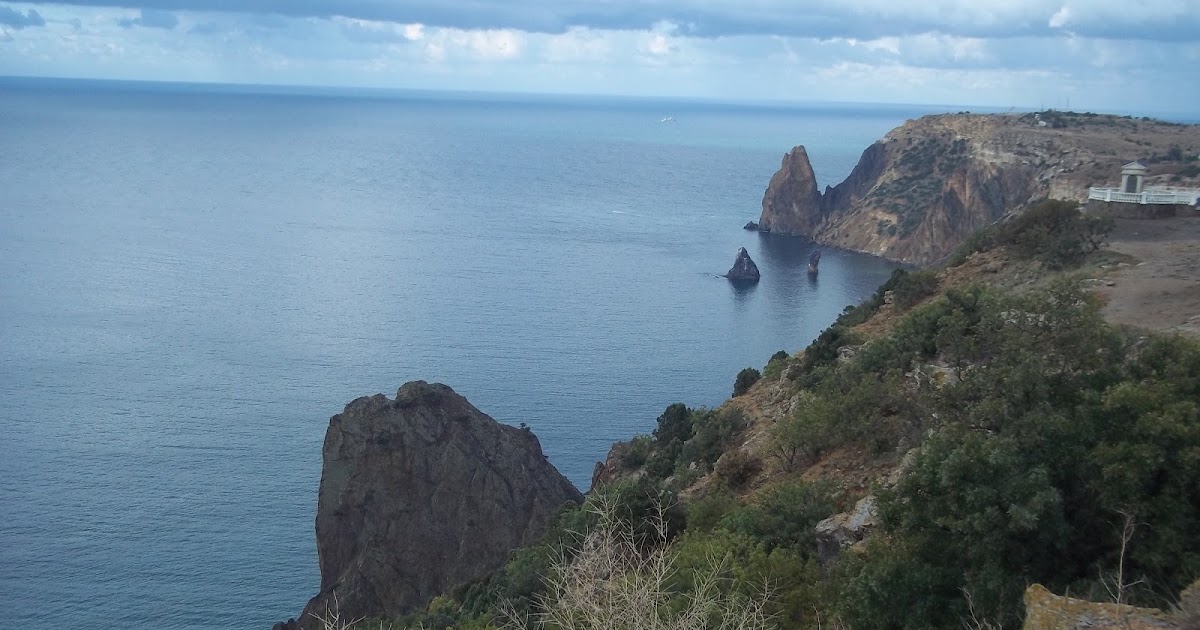The 5 reasons why the «referendum» in Crimea is illegal
Image source: Максим Кошелев
Seven years ago, on this day, on 16 of March 2014, the so-called «referendum» began in Crimea, after which the Crimean peninsula was occupied by the Russian Federation. The British Foreign Office later posted on Twitter five reasons why it was not recognized by either Ukraine or the international community. Since then, Ukrainian and international publications have taken the word «referendum» in quotation marks, emphasizing that there was an occupation in Crimea, but not a legitimate expression of the will of the people.
The first reason for holding such a «referendum» is that it violated the Constitution of Ukraine. The current government in Crimea, based on paragraph 10 of Article 138 of the Constitution of Ukraine, legalizes the «Crimean referendum», arguing that according to this point, local referendums in Crimea were possible. The lawyer of the Crimean Human Rights Group, Bohdan Melnykovych, explains that paragraph 10 of the above-mentioned Article 138 of the Constitution of Ukraine concerns issues at the local level. However, if we turn to Article 73 of the Constitution of Ukraine, it states that issues of change in the territory of Ukraine are decided exclusively in an all-Ukrainian referendum. Therefore, according to the Constitution of Ukraine, the referendum held in 2014 was not legal. The local referendum in Crimea could address issues of recognition of the status of the area as resorts, ensuring the functioning and development of state and national languages and cultures, participation in the development and implementation of state programs for the return of deported peoples, initiating a state of emergency and establishing emergency zones. But by no means a question of territorial affiliation. This contradicts the Constitution of the state».
However, if we turn to Article 73 of the Constitution of Ukraine, it states that issues of change in the territory of Ukraine are decided exclusively in an all-Ukrainian referendum. Therefore, according to the Constitution of Ukraine, the referendum held in 2014 was not legal. The local referendum in Crimea could address issues of recognition of the status of the area as resorts, ensuring the functioning and development of state and national languages and cultures, participation in the development and implementation of state programs for the return of deported peoples, initiating a state of emergency and establishing emergency zones. But by no means a question of territorial affiliation. This contradicts the Constitution of the state».
The second reason for the illegality of the «referendum» is the number of pro-Russian media that dominated the semi-island in 2014. Kerch journalist Olena Lysenko, who worked in the Crimea at the time, recalls: “When I was filming the ferry, my so-called ‘Cossacks’ and my colleague started pushing me.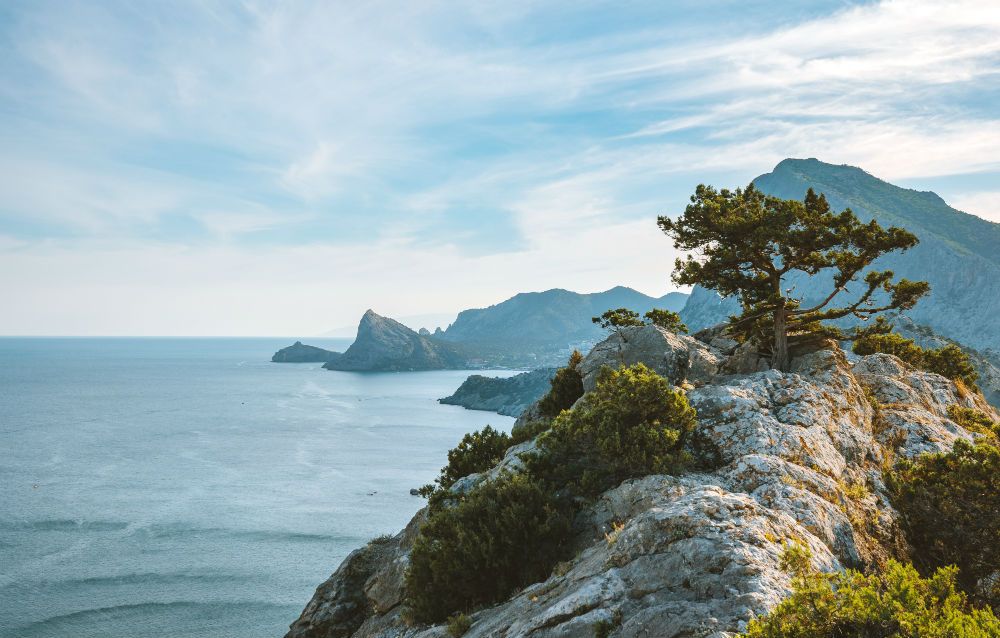 One of the Russian servicemen tried to forbid me to film. When I asked the reason, it was enough for him to wave his hand and a crowd of these dressed-up «Cossacks» came at us. They pushed us to the car itself, which was parked nearby. I remember a colleague who went with me, just as a driver, protecting me from them so that I wouldn’t be in so much pain. I will never forget that he behaved so heroically then, alone against the crowd. I started crying and, in fact, we managed to get out of there. I was very afraid that my card or equipment would be taken away from me. «Sevastopol resident Lara Moss recalls that Russian propaganda worked to intimidate the peninsula’s residents: I remember at school the parents of my children’s classmates took it very seriously that the Ukrainian Nazis had brought gallows, they would hang Russian women. Russian-speakers will be shot, and NATO troops have already distributed apartments on the Great Sea in Sevastopol. And here are all these fake horror stories, their level was simply outrageous».
One of the Russian servicemen tried to forbid me to film. When I asked the reason, it was enough for him to wave his hand and a crowd of these dressed-up «Cossacks» came at us. They pushed us to the car itself, which was parked nearby. I remember a colleague who went with me, just as a driver, protecting me from them so that I wouldn’t be in so much pain. I will never forget that he behaved so heroically then, alone against the crowd. I started crying and, in fact, we managed to get out of there. I was very afraid that my card or equipment would be taken away from me. «Sevastopol resident Lara Moss recalls that Russian propaganda worked to intimidate the peninsula’s residents: I remember at school the parents of my children’s classmates took it very seriously that the Ukrainian Nazis had brought gallows, they would hang Russian women. Russian-speakers will be shot, and NATO troops have already distributed apartments on the Great Sea in Sevastopol. And here are all these fake horror stories, their level was simply outrageous».
The third reason is that the Russian military has captured key parts of the peninsula. And citizens «voted» under the watchful eye of Russian «green men». Elena Lysenko explains that all «dirty work» on the clearing of journalists, was carried out by «Cossacks». In order for the reputation of «polite people» to remain impeccable and for them («green men» — ed.) To remain in the eyes of the Crimean people as a model of ideal behaviour of the Russian military. Her words are confirmed by one of the Ukrainian servicemen, who wished not to give his name. He left the peninsula immediately after the occupation, without remaining in the Russian army. «Then, at the same time, not only Russian servicemen were transferred to the Crimea, but from what I saw personally, they were Russian gangs. «Cossacks», Chechens, retirees. They were the ones who suppressed the protests, dispersed the Ukrainian actions, and did not allow Ukrainian journalists».
The fourth reason is the speed of preparation for the «referendum».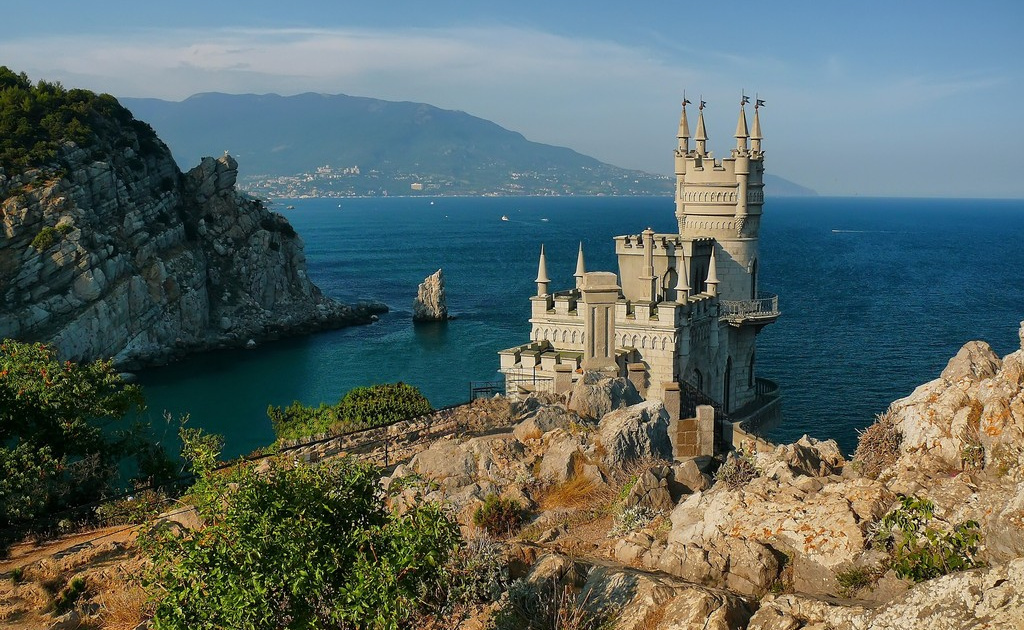 The vote was prepared in 20 days, which did not allow for public discussion. In addition, there was no item in the ballots printed on plain A4 white sheets that would allow people to vote for Crimea to remain part of Ukraine. Actor from Simferopol, Yevhen Chernikov, says: “The ballots promised three issues: Crimea as part of Russia, Crimea as part of Ukraine and Crimea as an independent state. Many of the people really believed in the fairness of the vote, as if their opinion worried someone, they wanted to go to a referendum to vote for Crimea as part of Ukraine. And such a point, as a result, did not even exist. «Lara Moss says that the number of open polling stations was much smaller than in regular elections: For example, the polling station where I voted regularly was not opened. The polling station where my mother had previously been either a member of the chairman of the election commission was not opened. Here I can speak about at least two closed sites quite precisely. Now the question is: how many such closed polling stations were in Crimea, which worked during the regular elections until 2014? This was done precisely to show through Russian channels how many people came to the polls.
The vote was prepared in 20 days, which did not allow for public discussion. In addition, there was no item in the ballots printed on plain A4 white sheets that would allow people to vote for Crimea to remain part of Ukraine. Actor from Simferopol, Yevhen Chernikov, says: “The ballots promised three issues: Crimea as part of Russia, Crimea as part of Ukraine and Crimea as an independent state. Many of the people really believed in the fairness of the vote, as if their opinion worried someone, they wanted to go to a referendum to vote for Crimea as part of Ukraine. And such a point, as a result, did not even exist. «Lara Moss says that the number of open polling stations was much smaller than in regular elections: For example, the polling station where I voted regularly was not opened. The polling station where my mother had previously been either a member of the chairman of the election commission was not opened. Here I can speak about at least two closed sites quite precisely. Now the question is: how many such closed polling stations were in Crimea, which worked during the regular elections until 2014? This was done precisely to show through Russian channels how many people came to the polls. But, in fact, those who wanted to vote simply had no choice and went to the available open polling stations, creating queues».
But, in fact, those who wanted to vote simply had no choice and went to the available open polling stations, creating queues».
The fifth reason for the illegality of the «referendum» is the lack of international independent observers. This is precisely the consequence of the first point: neither Ukraine, nor the members of the European Union, nor the G7 group has recognized the occupation of Crimea. The fifth point directly depends on the first, explains lawyer Bohdan Melnykovych: of course, no country has sent its observers, because holding this referendum is a mechanism that took place within the framework of armed aggression. Yes, in Crimea there was no war in the understanding of the average citizen. But as of 16 March 2014, on the territory of Ukraine, the Russian army was in Crimea. However, under international law, this qualifies as an armed conflict. Accordingly, what is the point of sending observers to what is on the surface, it is not immediately legal and legitimate»?
3 killed, key Russian supply route damaged in Crimea bridge blast
Russia’s Energy Ministry said Crimea has enough fuel for 15 days, adding that it was working on ways to replenish stock
Russia’s Energy Ministry said Crimea has enough fuel for 15 days, adding that it was working on ways to replenish stock
An explosion caused the partial collapse of a bridge linking the Crimean Peninsula with Russia on October 8, damaging a key supply artery for the Kremlin’s faltering war effort in southern Ukraine.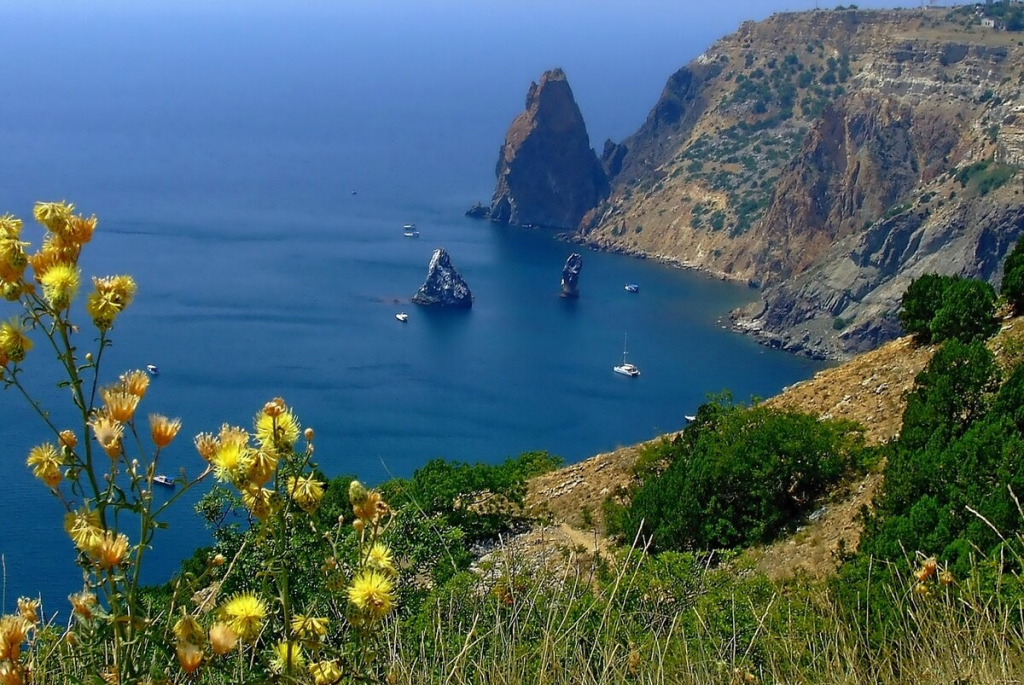 Three people were killed in the blast, Russian authorities said.
Three people were killed in the blast, Russian authorities said.
The speaker of Crimea’s Kremlin-backed regional parliament immediately accused Ukraine, though Moscow didn’t apportion blame. Ukrainian officials have repeatedly threatened to strike the bridge and some lauded the attack, but Kyiv stopped short of claiming responsibility.
A view shows a fire on the Kerch bridge at sunrise in the Kerch Strait, Crimea, October 8, 2022. | Photo Credit: Reuters
The bombing came a day after Russian President Vladimir Putin turned 70, dealing him a humiliating blow that could lead him to up the ante in his war on Ukraine.
Russia’s National Anti-Terrorism Committee said that a truck bomb caused seven railway cars carrying fuel to catch fire, resulting in a “partial collapse of two sections of the bridge.”
A man and a woman who were riding in a vehicle across the bridge were killed by the explosion and their bodies were recovered, Russia’s Investigative Committee said.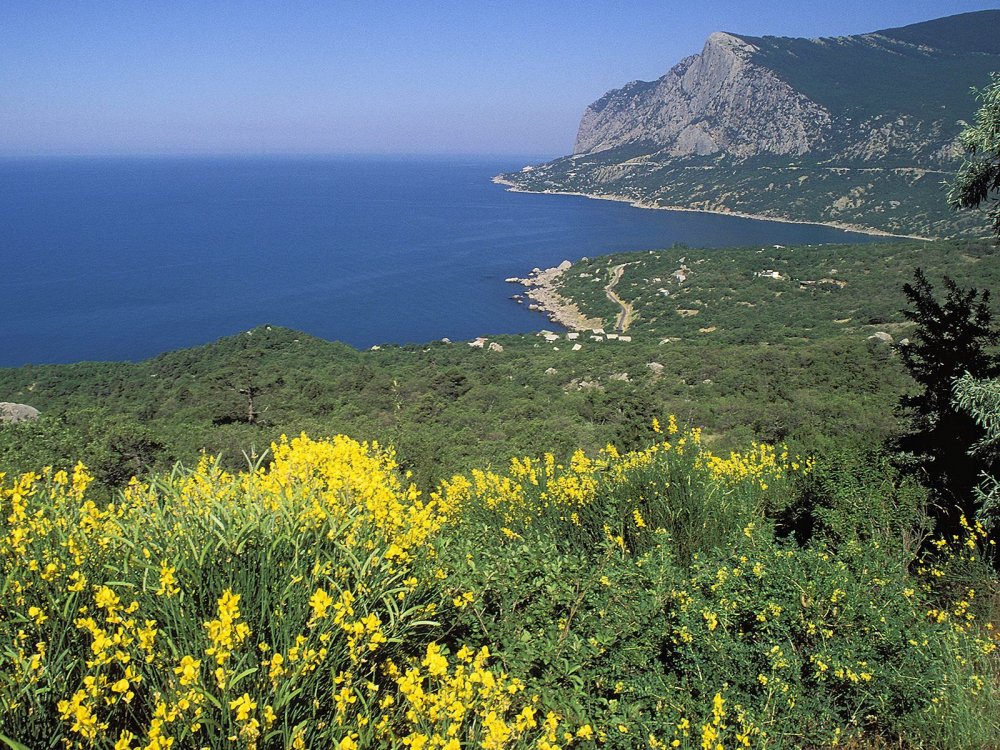 It didn’t provide details on the third victim.
It didn’t provide details on the third victim.
The 19-kilometre (12-mile) bridge across the Kerch Strait linking the Black Sea and the Sea of Azov opened in 2018 and is the longest in Europe.
Longest bridge in Europe, key link to Crimea
The $3.6 billion project is a tangible symbol of Moscow’s claims on Crimea and has provided an essential link to the Crimean Peninsula, which Russia annexed from Ukraine in 2014.
The peninsula holds symbolic value for Russia and is key to sustaining its military operations in the south of Ukraine.
If the bridge were made inoperable, it would make it significantly more challenging to ferry supplies to Crimea. While Russia seized the areas north of Crimea early on during the invasion and built a land corridor to it along the Sea of Azov, Ukraine is pressing a counteroffensive to reclaim them.
The bridge has train and automobile sections. Russia’s National Anti-Terrorism Committee specified that the explosion and fire led to the collapse of the two sections of one of the two links of the automobile bridge, while another link was intact.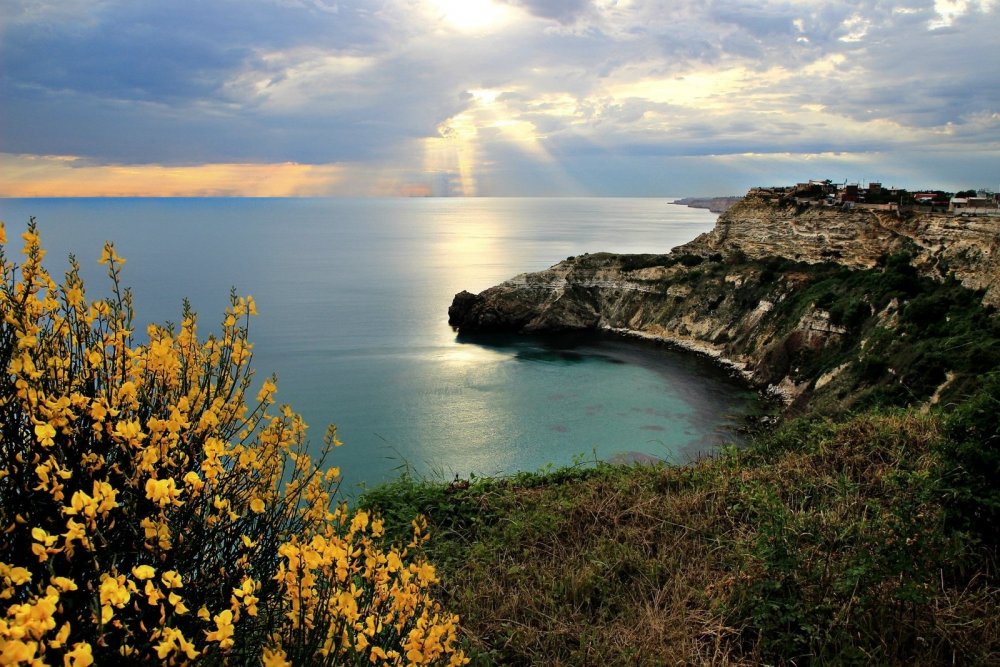
Russia’s Energy Ministry said Crimea has enough fuel for 15 days, adding that it was working on ways to replenish stock.
Authorities suspended passenger train traffic across the bridge until further notice. Putin was informed about the explosion and he ordered the creation of a government panel to deal with the emergency.
The speaker of Crimea’s Kremlin-backed regional parliament blamed Ukraine for the explosion, but downplayed the severity of the damage and said the bridge would be promptly repaired.
“Now they have something to be proud of: over 23 years of their management, they didn’t manage to build anything worthy of attention in Crimea, but they’ve managed to damage the surface of the Russian bridge,” Vladimir Konstantinov, chairman of the State Council of the Republic, wrote on Telegram.
Meanwhile in Crimea:
pic.twitter.com/iOvh9443l0
— Julia Davis (@JuliaDavisNews) October 8, 2022
The parliamentary leader of Ukrainian President Volodymyr Zelenskyy’s party on Saturday stopped short of claiming that Kyiv was responsible but appeared to cast it as a consequence of Moscow’s takeover of Crimea and attempts to integrate the peninsula with the Russian mainland.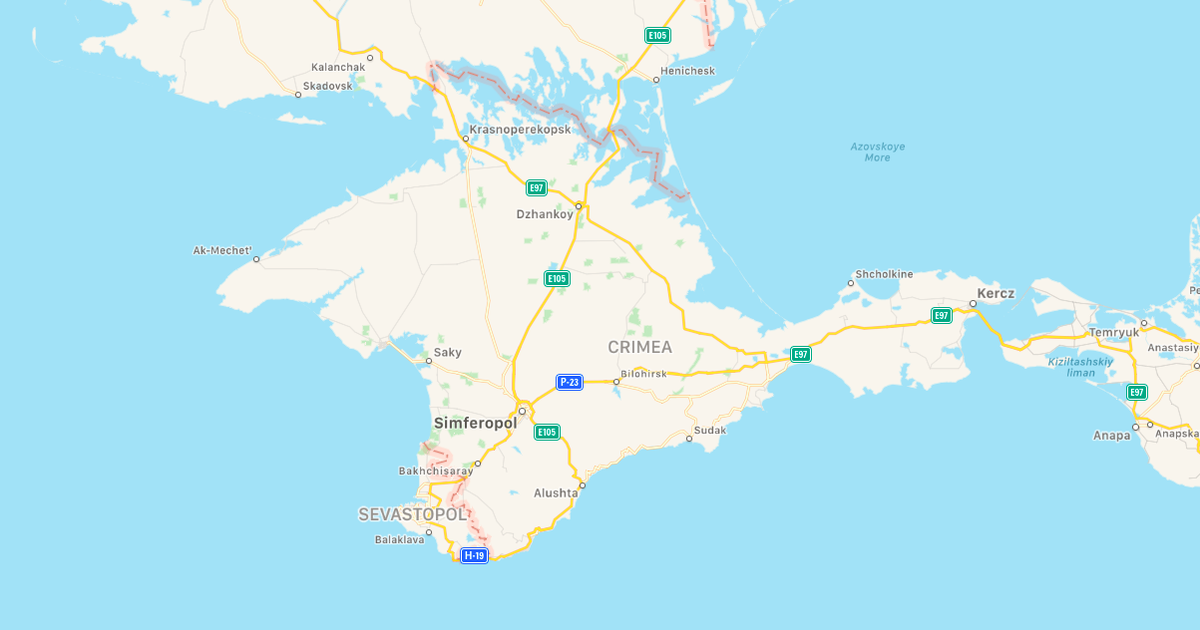
“Russian illegal construction is starting to fall apart and catch fire. The reason is simple: if you build something explosive, then sooner or later it will explode,” David Arakhamia, the leader of the Servant of the People party, wrote on Telegram.
“And this is just the beginning. Of all things, reliable construction is not something Russia is particularly famous for,” he said.
Other Ukrainian officials were more celebratory while still stopping short of claiming responsibility.
The Ukrainian postal service announced that it would issue stamps commemorating the blast, saying in a statement that the images would draw on classic film posters to highlight the bridge’s “sacred significance” to Moscow. The postal service previously released a set of stamps commemorating the sinking of the Moskva, a Russian flagship cruiser, by an Ukrainian strike in late May.
The secretary of Ukraine’s National Security and Defense Council, Oleksiy Danilov, posted a video on Twitter with the Kerch Bridge on fire on the left side and video with Marilyn Monroe singing her famous “Happy Birthday Mr. President” on the right.
President” on the right.
An advisor to Mr. Zelenskyy, Mykhailo Podolyak, tweeted: “Crimea, the bridge, the beginning. Everything illegal must be destroyed, everything stolen must be returned to Ukraine, everything occupied by Russia must be expelled:”
Crimea, the bridge, the beginning. Everything illegal must be destroyed, everything stolen must be returned to Ukraine, everything occupied by Russia must be expelled. pic.twitter.com/yUiSwOLlDP— Михайло Подоляк (@Podolyak_M) October 8, 2022
In Moscow, Russian Foreign Ministry spokeswoman Maria Zakharova said that “the reaction of the Kyiv regime to the destruction of civilian infrastructure shows its terrorist nature.”
In August, Russia suffered a series of explosions at an airbase and munitions depot in Crimea, which underlined its vulnerability.
Local authorities in Crimea made conflicting statements about what the damaged bridge would mean for residents and their ability to buy consumer goods on the peninsula, a popular sun-and-sea destination for Russian tourists year-round that is home to Sevastopol, a key city and a naval base.
Reflecting the tensions, Mikhail Razvozhayev, the head of Sevastopol, initially announced a ban on sales of car fuel in canisters and said that the sales of groceries will be limited to 3 kilograms per person to avoid a panicky run on supplies, but then changed course just an hour later, saying that there will be no restrictions.
At the same time, he sought to assuage residents, insisting they weren’t cut off from the mainland.
“There are land corridors via the new territories, and the ferry crossing near the Crimean Bridge has started operating,” he said.
The Association of Russia’s tourist agencies estimated that about 50,000 tourists were in Crimea on vacation at the time of the blast. The head of Russia’s top tourism body, Ilya Umansky, told the Interfax agency that ferry links had been relaunched Saturday between the peninsula and the mainland but admitted that those seeking to enter Crimea in the coming days were set to experience “some discomfort.”
The blast on the bridge occurred hours after explosions rocked the eastern Ukrainian city of Kharkiv early Saturday, sending towering plumes of smoke into the sky and triggering a series of secondary explosions.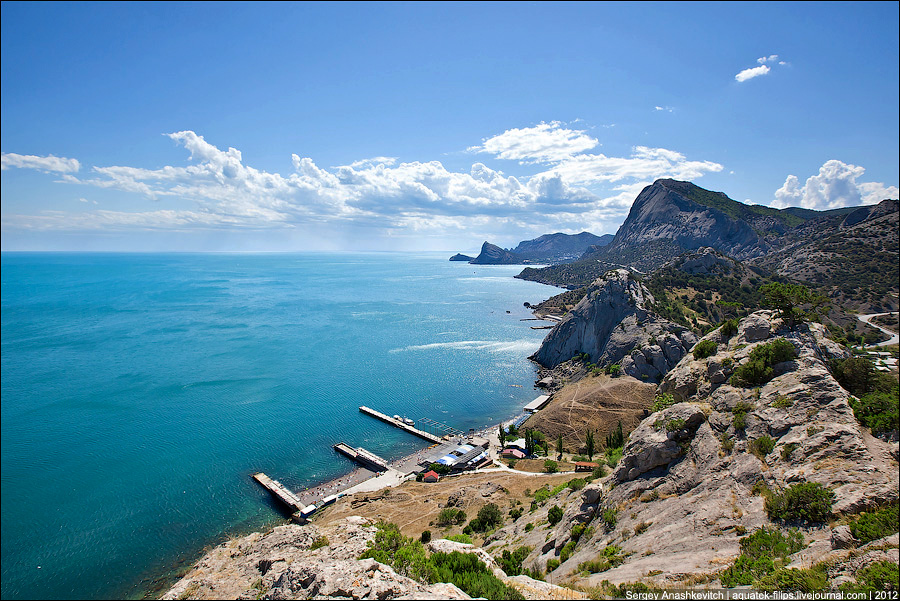
Ukrainian officials accused Russia of pounding Kharkiv, Ukraine’s second-largest city, with surface-to-air missiles and said at least one person was wounded. The strikes targeted the largely residential neighbourhoods of Saltivka and Osnovianskiy, the regional governor, Oleh Sinehubov, said on Telegram.
Mr. Sinehubov said Russia had deployed S-300s missiles in the strike. If true, this would mark the latest in a series of instances when Moscow was reported to have repurposed a weapon originally designed for air defense to strike ground targets, possibly because of a shortage of more suitable munitions.
Ukrainian authorities in the northern Sumy region, west of Kharkiv and a frequent target of Russian shelling and missile attacks, also reported on Saturday that five towns and villages had been hit overnight. Dmytro Zhyvytskyi, the regional governor, said on Telegram that a 51-year-old civilian man had been killed.
Russian rockets also slammed into three towns facing the Zaporizhzhia nuclear power plant, Europe’s largest.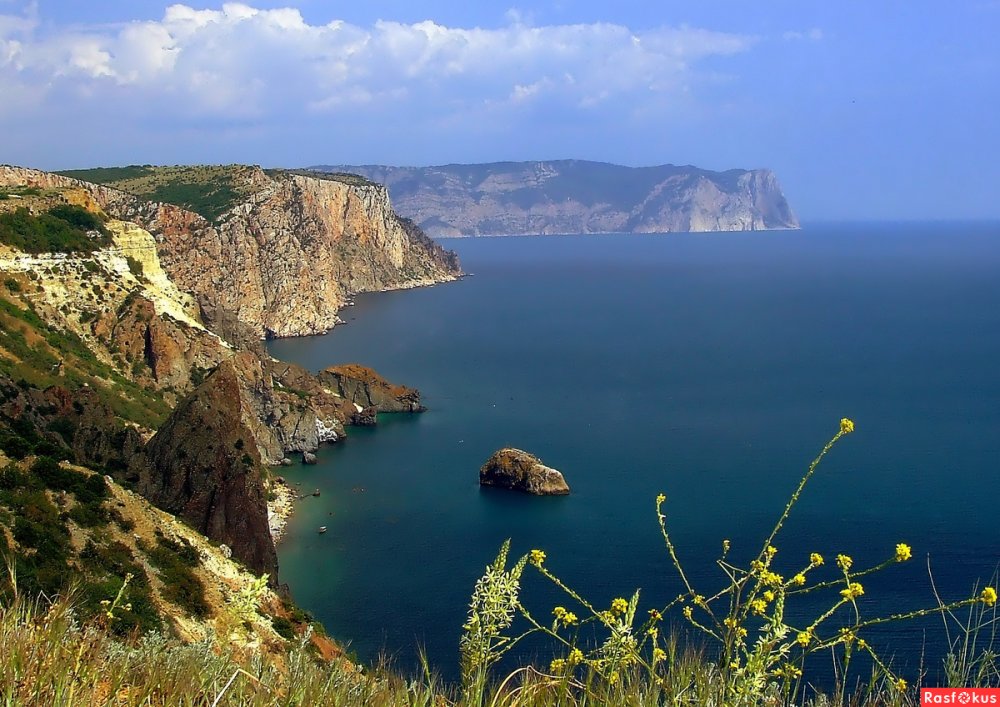 The regional governor, Valentyn Reznichenko, said that nobody was injured in the strikes on the towns of Marganets, Chervonohryhorivka, and Myrove.
The regional governor, Valentyn Reznichenko, said that nobody was injured in the strikes on the towns of Marganets, Chervonohryhorivka, and Myrove.
The death toll, meanwhile, from earlier missile strikes on apartment buildings in Zaporizhzhia rose to 17, Ukrainian emergency services reported.
The State Emergency Service of Ukraine wrote on Telegram that 21 people had been rescued from the rubble of a four-story apartment block, and that search and rescue work was continuing.
Russian missiles damaged more than 40 apartment buildings on Thursday in the Ukrainian-controlled city, which is nevertheless the official capital of a region Moscow moved to illegally annex last week. Zaporizhzhia lies across a wide reservoir on the Dnieper river from the nuclear plant with the same name, one of the world’s largest.
The deadly strikes came hours after Ukraine’s president announced that his military had retaken three more villages in another of the four regions claimed by Russia, Moscow’s latest battlefield reversal.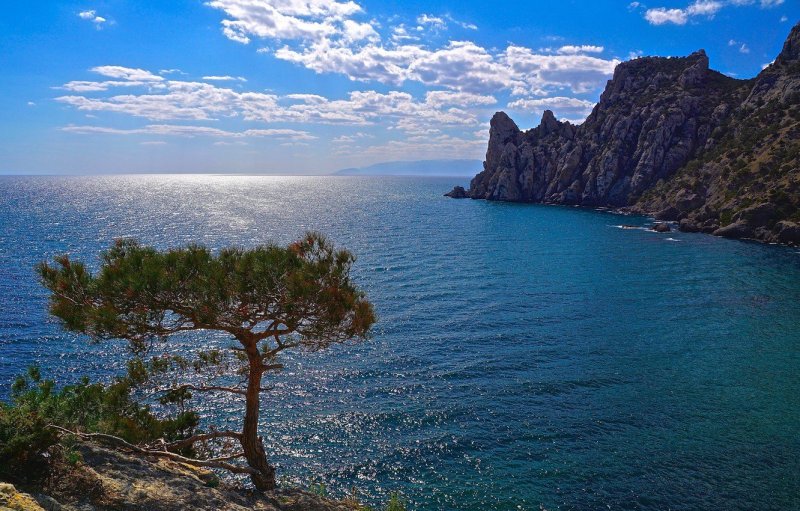
Крым предлагает тревожный план захвата Украины Россией
Алиев Алим, ведущий крымскотатарский правозащитник, рассказал Human Rights First о том, что может произойти, если российские силы возьмут под контроль больше областей Украины.
Россия захватила Крым в 2014 году, и Алим говорит, что с тех пор «были задокументированы тысячи нарушений прав человека, в том числе сотни обысков домов российскими силовиками, 14 похищений и 120 политических заключенных. Но на самом деле это только верхушка айсберга».
Возвращаясь к репрессиям советской эпохи, также появились сообщения о том, что российские власти направляют крымских диссидентов в психиатрические учреждения.
Алим является соучредителем общественной организации «Крым SOS», известным автором и членом консультативных советов нескольких украинских общественных организаций. С 2014 года «Крым SOS» помогает крымчанам, перемещенным в результате российского захвата, обосноваться в других местах Украины. После российского вторжения 24 февраля 2022 года многие были вынуждены снова переселиться.
Организация быстро приспособилась к новому кризису и теперь является частью 5am Ukraine, новой коалиции украинских НПО, документирующих военные преступления.
Алим описывает захват Крыма Россией в 2014 году как третью колонизацию Крыма с 18 века. «Некоторые крымчане думали, что поглощение будет означать возвращение к советским временам, с некоторыми преимуществами той эпохи, низкими ценами и социальным обеспечением, но путинская Россия гораздо суровее», — говорит он.
Крымские татары являются меньшинством, укоренившимся в Крыму, и сотни тысяч татар были насильственно депортированы из Крыма в 1944 по приказу советского лидера Иосифа Сталина. В прошлом году правительство Украины официально признало крымских татар коренным народом.
Amnesty International сообщила , что «крымскотатарский народ, как наиболее заметная и сплоченная группа в Крыму, выступающая против российской оккупации, стал преднамеренной мишенью со стороны де-факто местных и российских властей в ходе волны репрессий, направленных на то, чтобы заставить замолчать их инакомыслие и обеспечение подчинения каждого человека в Крыму аннексии».
Основываясь на том, что произошло в Крыму за последние восемь лет, Алим опасается, что возможна трагедия, если Россия захватит больше территории Украины. «Милитаризация земли, но также и сознания, с доминированием пророссийских СМИ в медиапространстве. Из Крыма произошла массовая утечка мозгов: уехали 50 000 местных жителей — часто это образованная элита, молодые профессиональные политические и гражданские лидеры».
При этом, говорит он, «за последние восемь лет в Крым переехало полмиллиона россиян. Есть пожилые люди из Сибири. Какой сибиряк-пенсионер не захотел бы туда переехать? Крым — это украинская Флорида — там солнце и море, и многие другие, в том числе российские силовики и их семьи, переехали».
Для России это вопрос не только территории, но и «фантомных амбиций», говорит Алим. «Речь идет о тоталитаризме, об авторитаризме и о том, что продвигает путинская Россия: он хочет возродить неоимперию. У крымчан очень четкое представление о том, как это выглядит».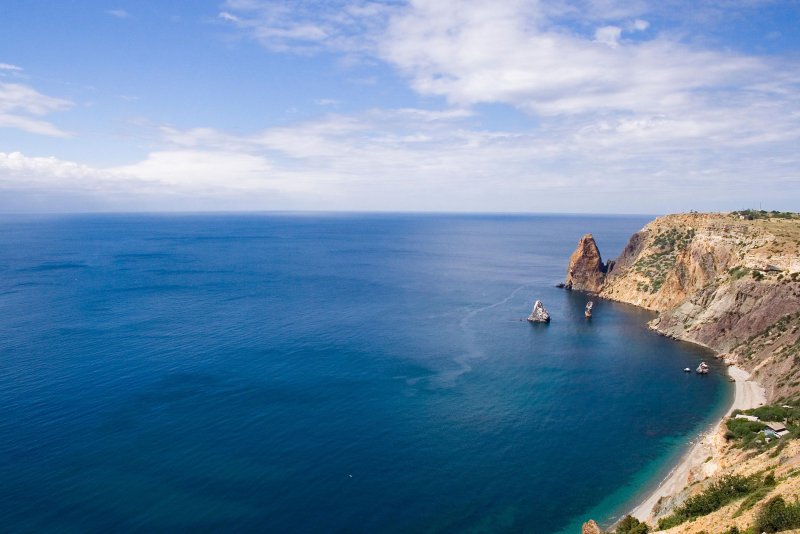
Он, конечно, надеется, что нынешнее вторжение не закончится территориальными приобретениями России, но говорит: «За последние восемь лет произошла тотальная российская колонизация Крыма — изменение идентичности и населения. Сегодняшняя война в Украине — вызов не только для Украины, но и для Европы и всего демократического мира».
Он добавляет: «Надеюсь, мы скоро встретимся в свободном Крыму…».
Зеленский: «Мы обязательно освободим Крым»
Президент Украины Владимир Зеленский во вторник пообещал вернуть Крым после того, как лидеры парламента собрались в Хорватии для координации международной реакции на российскую оккупацию в регионе.
«Мы обязательно освободим Крым», — заявил Зеленский в своем ночном обращении.
«Мы вернем эту часть нашей страны не только во всеукраинское пространство, но и в общеевропейское пространство», — продолжил он. «Сегодня это еще раз подтвердилось. И я благодарен всем нашим партнерам — почти 50 государствам и международным организациям, — которые помогают в парламентском формате».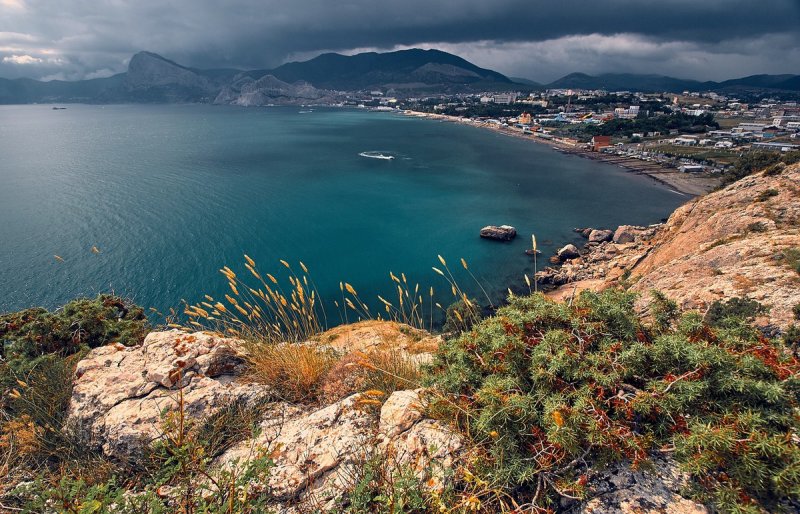
Россия аннексировала Крым в 2014 году, за несколько лет до ее вторжения в другие части Украины в феврале, хотя большая часть международного сообщества не признает претензии Кремля в Крыму или в четырех украинских областях, которые он аннексировал ранее в этом месяце.
Украина выступила с инициативой Крымской платформы до последнего вторжения России, стремясь создать консультативный международный орган для упорядочения реакции на оккупацию Москвы.
Парламентские лидеры из десятков стран собрались на этой неделе в Хорватии на первый парламентский саммит платформы, в том числе спикер Нэнси Пелоси (штат Калифорния). Член палаты представителей Джерри Коннолли (штат Вирджиния) также присутствовал в качестве президента Парламентской ассамблеи НАТО.
Зеленский виртуально пообщался с лидерами парламента, собравшимися на саммите, заявив, что будет «нелегко» реинтегрировать Крым с Украиной, но предположив, что «с каждым днем мы становимся ближе».
«Возвращение украинского флага в Крым — это возвращение привычной для всех европейцев нормальности, которая есть в каждой из ваших стран», — сказал Зеленский.